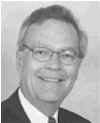|

|
Bottled
Poetry
Wine
Trails of Virginia
Forget
California’s Napa Valley or Sonoma County.
Virginia wine lovers can choose from eight
wine trails and more than 130 wineries spread
across the Old Dominion from the Eastern Shore to
Appalachia. While vineyards in Virginia still
don’t match their New York or California rivals in
grape production, viticulture has come of age in the
commonwealth.
In
1979, there were only eight wineries in the state.
Today, Virginia ranks ninth in the nation in grape
production, according to Virginia Tech’s Virginia
Vineyards Web page. As of 2004, more than 2,300
acres were dedicated to grape growing, with the bulk
of that acreage in vineyards. Such vineyards are
scattered across the state, but the northern
Piedmont boasts the largest number. The top ten
grape-producing counties are Albemarle, Loudoun,
Fauquier, Orange, Nelson, Shenandoah, Westmoreland,
Rappahannock, Patrick and Essex. Leading varieties
grown are Chardonnay, Cabernet Franc, Cabernet
Sauvignon, Merlot, Vidal Blanc, Viognier, Norton,
Chambourcin, and Seyval.
Former
Gov. Mark R. Warner recognized the growing
importance of the wine industry when he formed the
Governor’s Wine Study Work Group in June 2004. The
group developed Vision
2015: A Strategic Direction for the Virginia Wine
Industry, a strategic plan that, in the next
seven years, hopes to double the industry’s market
share within the commonwealth and increase national
sales, as well.
Enthusiasm
for the vintner’s trade was not always evident in
Virginia’s history. When the Virginia Company sent
settlers to Jamestown, its gentlemen and merchants
hoped to find gold mines and the Northwest Passage
but wanted to develop commodities as well. Virginia
was established as a trading colony and the managers
hoped to make money from the production of glass,
iron, naval stores, silk, and wine ("Romancing
the Vine in Virginia," Colonial
Williamsburg Journal, Summer 2002). This was an era
when water could be dangerous to drink and one
Englishman might drink 40 gallons of alcohol per
year.
In
1611 Thomas Dale, an early colonial governor,
established a three-acre vineyard with native
grapes, such as scuppernong and Catawba to test
whether local wines would sell. His successor, Lord
De La Warr, imported some French experts to oversee
the project, but they failed to get a wine business
established. Among the factors they blamed beside
climate and poor soil was browsing deer.
This
did not deter Virginia’s colonists when they
established the first General Assembly in 1619. The
burgesses passed “Acte 12,” which required
colonists to grow vineyards as a possible cash crop
for the colony. Today, the Williamsburg Winery,
which sits on part of an original 85 acres set aside
because of this legislation, sells a popular vintage
known as “Acte 12 Chardonnay.”
Thomas
Jefferson, who loved all things French, tried his
luck at viticulture, turning over 2,000 acres to
wine-growing at Monticello. His efforts failed,
either because lice invested leaves and roots or
because of the revolution. The latter part of the
19th century saw the rise of prohibition -- and
Virginia was a dry state even before the federal
Prohibition law was passed. When the law was
repealed in 1933, Williamsburg was the first city to
end it and opened liquor stores in 1934.
It
wasn’t until the 1970s that Virginia wines began
to compete nationally with the help of the U.S.
Department of Agriculture and state universities.
In
fact there is an Enology-Grape Chemistry Lab at
Virginia Tech that researches such esoteric topics
as “effect of wine closures on head space
volatiles” and “nitrogen status of grape juice
as an indicator of wine quality.” It seems there
is more to wine than connoisseurs’ terms such as
“bouquet,” “texture,” “nose,” and
“palate.”
If
you want to embark on one of the Old Dominion’s
wine trails, check out a wide variety of resources
from the Virginia
Wine Marketing Office to blogs such as Virginia
Vine Spot, written by an Alexandria wine lover
named Dezel, which posts winery reviews. Dezel's
most recent posting offered wine-tasting tips,
including: don’t use cologne, perfumes or lotions;
before you go wine tasting, have a good breakfast or
lunch and bring a few bottles of water; call ahead
to confirm tasting hours; and, of course, pick a
designated driver.
And
don’t forget the bumper sticker a Washington
Post travel writer (“It’s Not Napa but
It’s Near,” June 3, 2007) found pasted on the
wall behind a commonwealth tasting counter:
“Virginia makes wines. Napa
makes auto parts.”
NEXT:
Beyond Bluegrass: Virginia’s Rock ‘n Rollers
--
April 7, 2008
|
|
